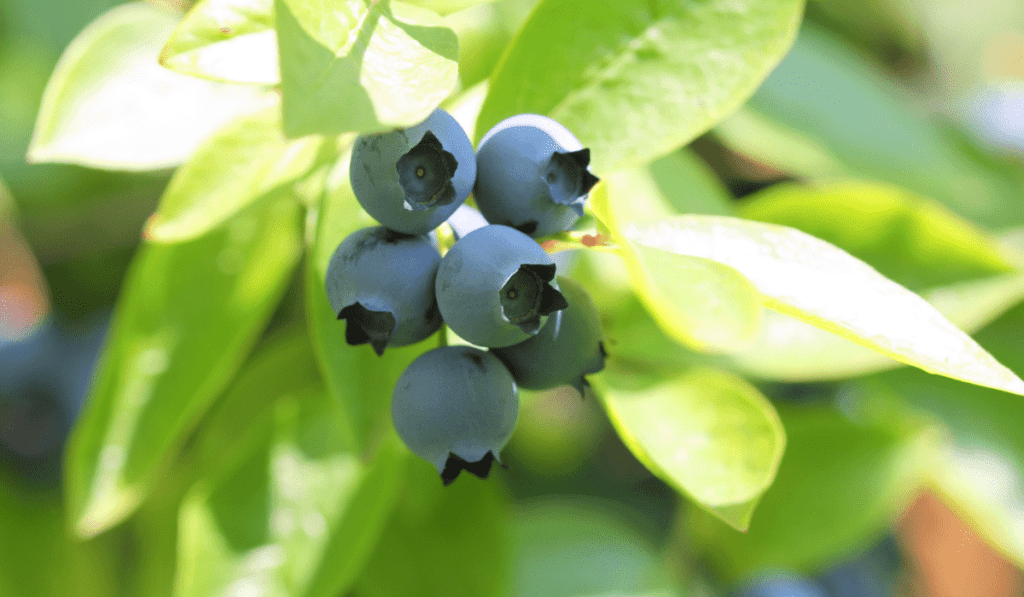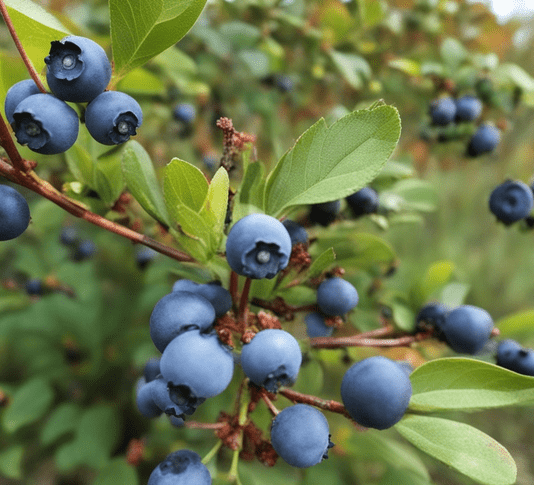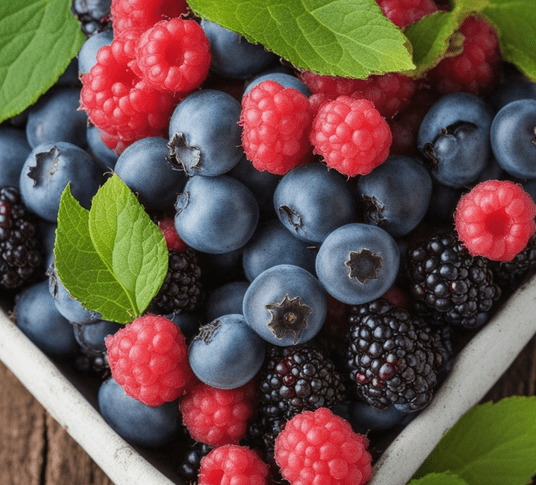Are you ready to embark on a journey into the world of half-high blueberries? Ever wondered how to cultivate these delightful berries in your own backyard? From choosing the perfect location to enjoying a bountiful harvest, our comprehensive guide on planting half-high blueberries is your key to a successful and rewarding blueberry patch.
Choosing the Right Location for Planting Half-High Blueberries
Creating the ideal environment for your half-high blueberries is the first step toward a thriving harvest. Explore the nuances of sunlight exposure, air circulation, soil drainage, elevation, frost protection, structural support, and microclimates to set the stage for robust blueberry bushes.
Sunlight Exposure: Insights: Understand the sunlight requirements for half-high blueberries, ensuring they receive the optimal amount of sunlight for healthy growth and fruit production.
Air Circulation: Considerations: Delve into the significance of air circulation in preventing diseases and fostering a favorable microclimate for half-high blueberries.
Soil Drainage: Guidelines: Learn about soil drainage and its impact on the root health of half-high blueberries, emphasizing the importance of well-draining soil.
Elevation and Frost Protection: Protection Measures: Uncover strategies to protect your blueberries from frost, considering the elevation and its implications on temperature variations.
Structural Support: Installation Tips: Explore the need for structural support, especially in regions with windy conditions, to prevent damage to your half-high blueberry bushes.
Microclimates: Microclimate Management: Delicate insights into how microclimates influence the growth of half-high blueberries and how to manage them effectively.
Preparing the Soil for Planting Half-High Blueberries
The groundwork for successful blueberry cultivation begins with soil preparation. Dive into early preparation, the incorporation of organic matter, soil testing, pH adjustment, enhancing drainage, and weed control for optimal soil conditions.
Early Preparation: Seasonal Readiness: Explore the importance of preparing the soil in advance, considering seasonal variations for the best outcomes.
Incorporating Organic Matter: Soil Enrichment: Understand the role of organic matter in enriching the soil and providing essential nutrients for half-high blueberry growth.
Soil Test: Testing Protocols: Delve into the necessity of soil testing, unraveling the mysteries of your soil’s composition and nutrient levels.
pH Adjustment: Optimization Techniques: Learn about adjusting soil pH to create an acidic environment, crucial for the thriving health of half-high blueberries.
Enhancing Drainage: Drainage Improvement: Implement techniques to enhance soil drainage, preventing waterlogged conditions that could be detrimental to your blueberry bushes.
Weed Control: Weeding Practices: Master effective weed control methods, ensuring your half-high blueberries aren’t competing for nutrients and space with unwanted vegetation.
Selecting and Purchasing Half-High Blueberries Plants
Selecting the right half-high blueberry plants is a crucial step that sets the foundation for a successful harvest. Follow these three to four essential steps to ensure you make informed choices tailored to your specific growing conditions.
Assess Your Growing Conditions: Before you start shopping for half-high blueberry plants, assess your growing conditions. Consider factors such as climate, soil type, and available sunlight. Different varieties of half-high blueberries thrive in specific conditions, so understanding your environment is key to selecting plants that will flourish in your backyard.
Research Blueberry Varieties: There is a diverse range of half-high blueberry varieties available. Conduct thorough research on various cultivars, considering factors such as fruit size, flavor profile, and disease resistance. Some popular half-high blueberry varieties include ‘Northblue,’ ‘Northcountry,’ and ‘Chippewa.’ Each has its unique characteristics, so choose varieties that align with your preferences and regional climate.
Purchase from Reputable Nurseries: Choose a reputable nursery or garden center for your blueberry plant purchases. Look for establishments with a history of providing healthy and disease-free plants. Quality nurseries will offer well-cared-for blueberry bushes, increasing the likelihood of successful establishment in your garden.
Check Plant Health and Vigor: Examine the health and vigor of the blueberry plants before making a purchase. Inspect the foliage for signs of pests, diseases, or nutrient deficiencies. Healthy plants should have vibrant green leaves and sturdy stems. Check for any abnormalities and avoid plants with wilted or discolored foliage.
Consider Maturity and Size: Take into account the maturity and size of the blueberry plants. Depending on your preferences and garden space, you might opt for mature plants that provide quicker yields or smaller, younger plants that you can nurture and watch grow. Consider the expected size of the fully grown bushes and ensure they fit well within your garden layout.
Ask for Expert Advice: Don’t hesitate to seek advice from knowledgeable staff or local gardening experts. They can provide valuable insights into the specific needs of half-high blueberries and recommend varieties that thrive in your region. Ask about the plants’ history, including their age, and inquire about any care tips or recommendations for optimal growth.
Check for Pest and Disease Resistance: Opt for half-high blueberry varieties known for their pest and disease resistance. This can significantly reduce the need for chemical interventions and make the cultivation process more manageable. Look for information on the plants’ resistance to common blueberry pests and diseases.
Remember, investing time and effort in selecting the right half-high blueberry plants pays off in the long run, ensuring a healthy and productive blueberry patch in your garden.
Planting Half-High Blueberries – Step-by-Step Guide
Ensure a successful start for your half-high blueberries with this step-by-step planting guide:
- Selecting Quality Plants:
- Choose robust plants with healthy foliage.
- Avoid wilted or discolored leaves.
- Timing is Everything:
- Plant in late fall or early spring for optimal growth.
- Avoid extreme weather conditions.
- Digging the Perfect Hole:
- Dig a hole twice as wide and deep as the plant’s root ball.
- Loosen the soil to promote root expansion.
- Planting Depth Matters:
- Place the plant in the center of the hole at the same depth as the nursery container.
- Backfill with soil and water thoroughly.
- Mulch for Moisture Retention:
- Apply a layer of organic mulch around the base of the plant.
- Mulch helps retain moisture and suppress weeds.
- Watering:
- Keep the soil consistently moist, especially during the first year.
- Use a soaker hose or drip irrigation for efficient watering.
- Support Structures:
- Install support structures like stakes if needed.
- Ensure they provide support without damaging the roots.
- Monitor and Adjust:
- Regularly check soil moisture and adjust watering accordingly.
- Monitor plant health for any signs of stress or pests.
- Prune for Growth:
- Trim any dead or damaged branches.
- Encourage bushy growth by pruning selectively.
By following these steps, you’ll establish a solid foundation for your half-high blueberries, setting the stage for a bountiful harvest.
Caring for Half-High Blueberries
Discover the essential care practices to ensure your half-high blueberry plants thrive and produce abundant, flavorful berries.
- Watering:
- Provide consistent moisture, especially during dry spells.
- Adjust watering frequency based on weather conditions.
- Fertilizing:
- Use a balanced, acid-forming fertilizer.
- Apply fertilizer in spring and early summer.
- Mulching:
- Maintain a 2 to 4-inch layer of organic mulch.
- Mulch aids in moisture retention and weed control.
- Pruning:
- Prune annually in late winter or early spring.
- Remove dead or weak wood and encourage new growth.
- Training and Support:
- Continue supporting the plants with stakes if needed.
- Train branches to maintain an open canopy for sunlight penetration.
- Pest and Disease Monitoring:
- Regularly inspect plants for signs of pests.
- Monitor for common blueberry diseases like mummy berry or powdery mildew.
- Harvesting Practices:
- Harvest when berries are fully ripe and easily detachable.
- Gently pick berries to avoid damaging the plant.
- Winter Preparation:
- Mulch heavily in late fall to protect roots from winter cold.
- Consider burlap wraps for additional frost protection.
By implementing these caring practices, you’ll foster robust growth and a continuous harvest of delicious half-high blueberries.
Pruning and Training Half-High Blueberries
Follow these expert guidelines to prune hand train your half-high blueberries for optimal growth and fruit production.
Pruning Steps:
- Late Winter Pruning:
- Conduct pruning in late winter or early spring before new growth begins.
- Remove dead, damaged, or diseased wood to encourage healthy growth.
- Thinning Out Crowded Growth:
- Eliminate overcrowded or weak stems to improve air circulation.
- Create an open canopy for sunlight penetration and even ripening.
- Selective Branch Removal:
- Identify and remove branches growing inwards or crossing each other.
- Favor well-spaced branches with outward growth.
- Height Control:
- Manage the height of the bushes by cutting back taller stems.
- Aim for a balanced and compact shape for ease of harvesting.
Training Techniques:
- Staking for Support:
- Provide support for the plants using stakes, especially in windy areas.
- Attach branches to stakes with soft ties to prevent breakage.
- Encouraging Lateral Growth:
- Stimulate lateral (side) growth by pruning the central leader.
- Lateral branches are where the majority of fruiting occurs.
- Regular Maintenance Pruning:
- Perform light pruning throughout the growing season.
- Remove any diseased or dead growth promptly.
- Post-Harvest Pruning:
- After harvesting, prune any non-productive or excessively tall branches.
- Shape the plant to maintain a desirable form.
Remember, proper pruning and training enhance sunlight exposure, increase air circulation, and promote the development of strong, fruit-bearing branches.
Common Pests and Diseases of Half-High Blueberries
Identifying and addressing potential threats to your half-high blueberries is crucial for a thriving orchard. Learn about common pests and diseases and how to protect your plants.
Common Pests:
- Blueberry Maggots:
- Identification: Look for small, white larvae in berries.
- Prevention: Use fine mesh netting to prevent adult flies from laying eggs on berries.
- Control: Apply insecticides at the appropriate times in the growing season.
- Japanese Beetles:
- Identification: Shiny, metallic green and copper beetles.
- Prevention: Neem oil and row covers can deter beetles.
- Control: Handpick beetles or use insecticidal soap.
- Aphids:
- Identification: Small, soft-bodied insects on new growth.
- Prevention: Attract natural predators like ladybugs.
- Control: Spray plants with a strong stream of water or insecticidal soap.
- Spider Mites:
- Identification: Fine webbing on leaves and stippling.
- Prevention: Maintain humidity and introduce predatory mites.
- Control: Insecticidal soap or neem oil.
Common Diseases:
- Mummy Berry Disease:
- Symptoms: Shrinking, shriveled berries with white fungal growth.
- Prevention: Remove infected berries and apply fungicides.
- Control: Copper-based fungicides during the dormant season.
- Powdery Mildew:
- Symptoms: White powdery spots on leaves.
- Prevention: Plant resistant varieties and ensure proper spacing.
- Control: Fungicidal sprays and pruning for air circulation.
- Leaf Spot Diseases:
- Symptoms: Dark lesions on leaves.
- Prevention: Prune for air circulation and apply fungicides preventatively.
- Control: Remove infected leaves and apply fungicides.
- Botrytis Blight:
- Symptoms: Gray mold on berries, particularly in wet conditions.
- Prevention: Proper spacing and removal of infected berries.
- Control: Fungicides and good air circulation.
Regular inspection, early detection, and prompt action are essential for managing pests and diseases effectively in your half-high blueberry orchard.
Conclusion
Congratulations on taking the first steps to cultivate delicious half-high blueberries in your home garden! By carefully selecting the right plants, considering your local conditions, and following our step-by-step planting guide, you’ve set the foundation for a successful harvest.
Remember, growing half-high blueberries is a rewarding journey that requires attention to detail and a bit of patience. Regular monitoring, proper watering, and occasional pruning will contribute to the overall health and productivity of your blueberry bushes.
As your plants mature, you can look forward to enjoying the sweet and nutritious berries they produce. Whether eaten fresh, added to desserts, or transformed into jams, these homegrown blueberries will undoubtedly enhance your culinary experiences.
Feel free to revisit our comprehensive guide whenever you need a refresher or encounter specific challenges. Gardening is an ongoing learning process, and your dedication will be reflected in the flourishing blueberry bushes and the delectable fruits they yield.
Thank you for entrusting us with your blueberry planting journey. Happy gardening, and may your harvests be plentiful!



